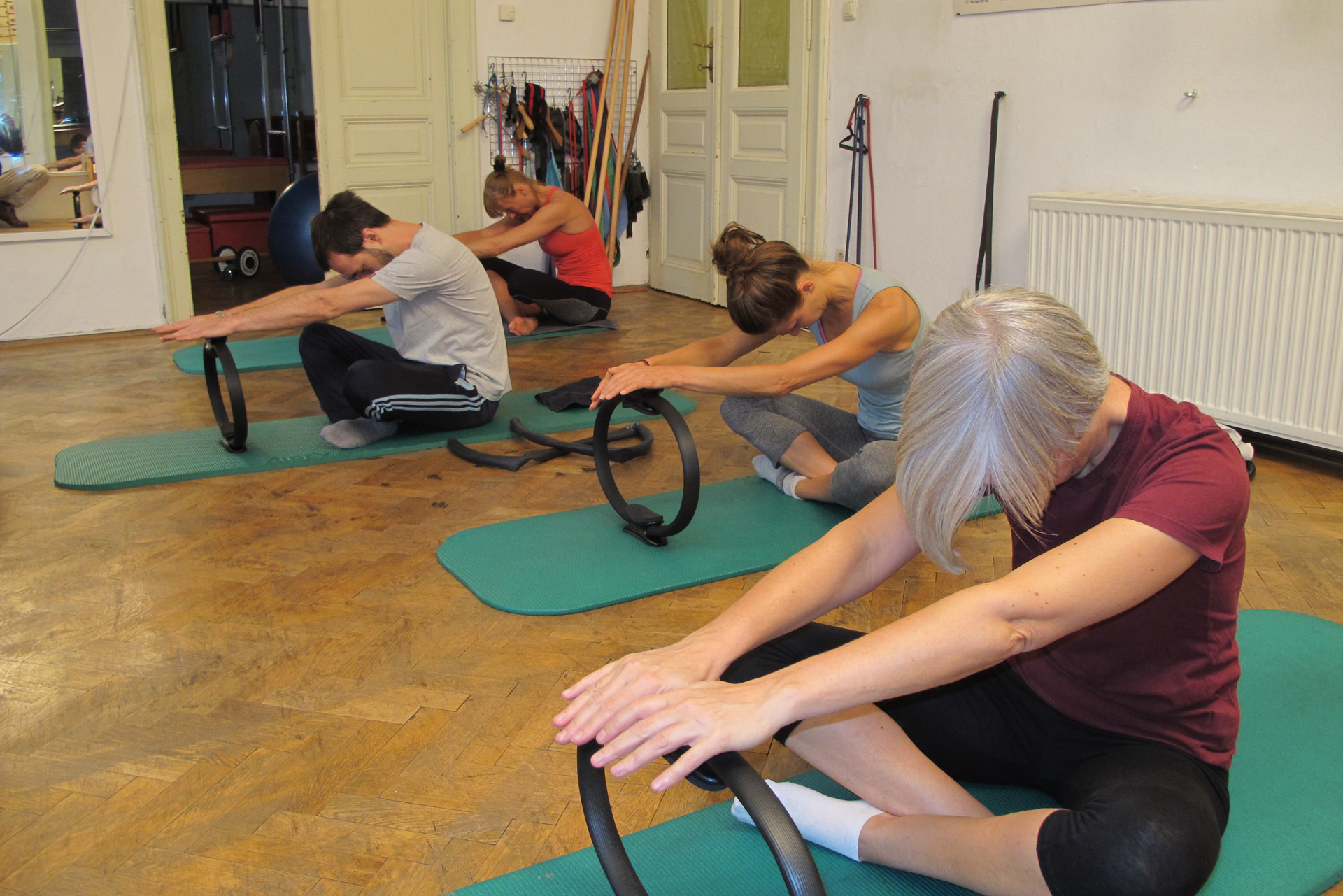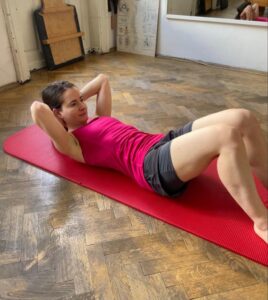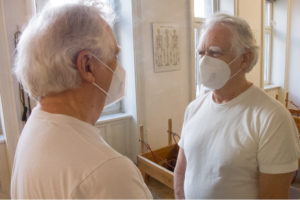Finding peace in breathing
Have you ever noticed how your breathing supports your training? How peaceful it feels when we manage to breathe in such a way that our movements flow? Lateral posterior breathing is one of the basics.
If you do Pilates, you will have heard of lateral posterior breathing because it is fundamental to the effective execution of the Pilates method. Here are 2 key reasons:
Lateral posterior breathing
- integrates the work of our diaphragm with the work of our deep muscle corset system and
- intensifies our shoulder girdle stabilisation.
How do we feel lateral posterior breathing? I will show you 3 exercise variations to experience lateral posterior breathing and find peace in breathing. Let us sense lateral posterior breathing!
Exercise variation 1: Wave-like movement of breath

Sit cross-legged, hug your chest and relax your pelvic floor muscles. Inhale for 3 seconds and feel your ribcage expand. Hold your breath for 12 seconds. Exhale for 6 seconds and notice how your ribcage contracts again. Practice this sequence until you can clearly feel the wave-like movement of your ribcage.
Exercise variation 2: Sensing the breath deep into my ribcage

Repeat the breathing sequence sitting on your knees with your hands on your ribcage. This time activate your pelvic floor muscles. Activating our pelvic floor muscles steadily directs our in-breath deeper into the lower sides and back of our ribcage. This prevents a collapse in our chest and results in a smoother contraction of our ribcage.
We also prevent ourselves from lifting our collarbone area when we inhale by breathing this way. Because the same muscles we use to lift our ribcage are exactly the same muscles we use to place our hands on the sides of our ribcage. Clever, isn’t it!
Practice this sequence and feel your breath deep in the lower sides and back of our ribcage.
Exercise variation 3: Sensing a deep ‘melting’ flexion

Lateral posterior breathing enables a deeper flexion of our upper body. We sense this in the last exercise variation. Go ahead!
Repeat the breathing sequence cross-legged, but this time with the hands on the Pilates Magic Circle. Inhale for 3 seconds and while exhaling for 6 seconds, activate the ABC principle.
A – Navel to spine
B – Chin to chest
C – Shoulder blades down towards the pelvis.
Make sure that you bring your shoulder blades down through your upper body – by ‘melting’ your chest – and not by pulling your hands down. Only when you ‘melt’ your chest, your ribcage can effectively connect with your pelvis and ground towards the floor.
Now hold the ABC principle and inhale for 3 seconds. Exhale for 6 seconds and stretch your spine through your 7th cervical spine using the eccentric (lengthening) contraction of your deep muscle corset system – your powerhouse. Practice this sequence and feel how your breath brings you deeper into flexion. Also, your glutes are ‘firing’ cohesively with your deep muscle corset system. But watch out!
I keep the connection of my ribcage to my pelvis
Under no circumstances should your glutes contract through an isolating pumping or grabbing action. When this happens, your gluteus muscles will override the concentric contraction of your deep muscle corset system . You will feel pressure in your lower back. Your core – your powerhouse – is rendered ineffective. A ‘hole’ is created that isolates our lower ribs from our pelvis. This causes the vertical force to shift from the front of our body to the back. Lateral posterior breathing is no longer possible.
Breathing enhanced!
I am sure the breathing tools I have shared with you today will enhance your breathing experience in 3 ways. They will
- give you a clear kinaesthetic feedback of what your breathing has to do
- direct your breathing to where it should take place and
- show your breathing how to get there.
Try it & flow with it!
Did you like our blog post? Then kindly support us and share it on social media sites like Facebook, Twitter, group forums, blogs and – all the retro way – personally among friends. We also highly appreciate your feedback on our exercises and posts.




